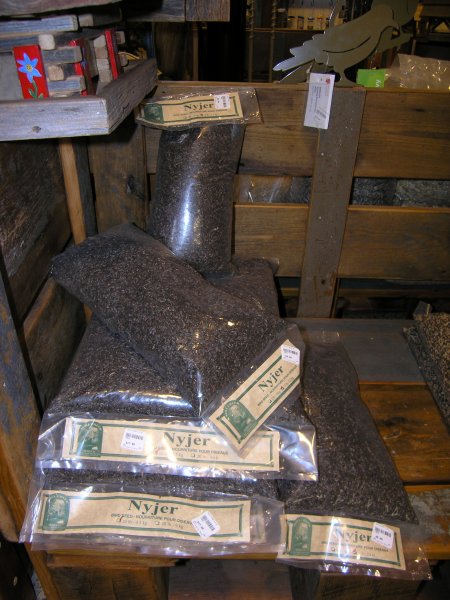Offer
Provide additional details about the offer you're running.
Provide additional details about the offer you're running.
Provide additional details about the offer you're running.

This tiny black birdseed has been a favorite choice for a variety of bird enthusiasts for a number of decades now and is also a preferred snack to a number of smaller clinging garden birds you can find in your backyard.
This seed is particularly fine in nature and is often confused with thistle, the noxious weed that is typically seen taking over fields and grassy areas. The confusion between the two has been thought to be brought on by the fact that some birds like Goldfinches have been known to eat the seeds of the thistle plants.
Nyjer bird seed tends to be one of the most expensive seeds on the market today, and given its small size, choosing the right feeder to distribute this seed is an important step to take to ensure it is not going to waste. In store we proudly carry two varieties of Nyjer Seed, a Wild Finch Blend containing fruit seeds, wild canary seed, and Nyjer as well as our Black Oil Nyjer Seed imported from India. Below we will illustrate the two most popular feeders for use in conjunction with this unique bird seed.
One the of the most popular designs, these feeders as their name suggests are made up of a plastic or metal mesh just big enough to allow the small nyjer seed to pass through it to feeding birds. Due to the nature of the species of birds that will feed on nyjer seed, this design is built for the flexible and acrobatic species like finches and other small birds. Mesh feeders are typically tube-shaped, and do not feature any perches as the birds will easily cling to the mesh while feeding.
These feeders, specifically designed for finches contain very small ports allowing for both the ease of access to smaller species of birds, as well as controlling the outflow of seed. One drawback to this type of feeder can sometimes be the lack of ports for feeding. Smaller birds like finches often travel in flocks, and you might find your feeder does not have a sufficient amount of ports to effectively feed the flock.